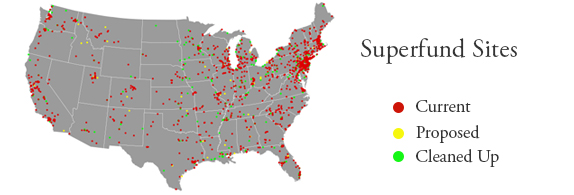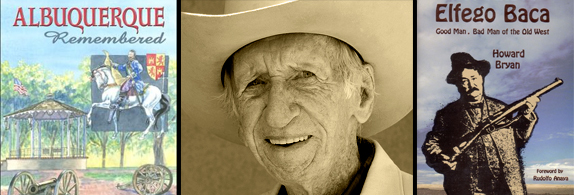Vote to Undermine the Superfund Again

The GOP in early January passed a bill in the U.S. House that further weakened the national Superfund law of l980. The Superfund, which is short for the Comprehensive Environmental Response, Compensation, and Liability Act (CERCLA), operates on the principle of “polluter pays” for clean up, a concept that the GOP and its allies in chemical, petroleum, and manufacturing companies have always found objectionable as if it was their divine right to contaminate our water supplies and poison our communities just so they can make money.
It’s a sick and monstrous version of a kind of behavior that exists along a spectrum from rebellious kids who refused to clean up after themselves to incorrigible military contractors who dump radioactive material anywhere they like and complain bitterly if they have to clean it up.
The GOP bill would further deteriorate the authority of the federal Superfund Act by moving many of its functions to the states, and would help get polluters off the hook. The bill was passed substantially along party lines with Republican Steve Pearce voting yes and Democrats Ben Ray Lujan and Michelle Lujan Grisham voting no. Democrats lost in a bid to put the skids on the GOP bill if it would have resulted in harming people by causing reproductive diseases, cancer or pulmonary illness.
This was a symbolic vote on the part of the GOP. It would have never made it through the Senate and I’m sure the President would have vetoed it, as one of his campaign promises was to restore the Superfund to financial and bureaucratic health. But it shows whose side the GOP is really on.
So what might have been the symbolic message that the GOP was trying to send the citizenry? That it really doesn’t give a hoot about public health? That letting companies make money is more important than protecting the lives and well being of families near their polluting factories and operations? That the GOP is the party of heartless, irresponsible money grubbers devoid of social conscience? That taking precautions where the health of children is concerned is viewed as contemptible by the Right? That it’s OK to let taxpayers to pick up the tab for pollution clean-up while making it possible for companies – polluters and non-polluters alike – to pay no taxes at all?
The GOP is on the wrong side of history. Even though we’ve all been taught that there are at least two sides to every issue and that to be fair, both sides should be given equal time and equal benefit of the doubt, there’s no rational argument for weakening the Superfund Act any more than it already is. In fact there’s no rational argument for weakening it all. Agreeing with the GOP bill would mean you’re happy to go on record supporting private profit over public health.
The Superfund Act has a potentially tremendous role to play in cleaning up New Mexico’s underground water supply if it could be applied forcefully to the military and its contractors. Because of the federal courts’ view of sovereign immunity of the federal government, however, the Superfund Act is not applied to Los Alamos National Laboratories, Sandia National Laboratories, or the KAFB jet fuel spill. The cleanup of most national security sites is left to the state and the vagaries of various political administrations. Democratic governor Bill Richardson and his Environment Department came down hard on both LANL and SNL, claiming them to be a danger to public health and wringing agreements from them to do basic remediation. I can’t imagine the Martinez administration even thinking such a thought.
New Mexico has some 14 existing Superfund cleanup operations, including three in Albuquerque, two of which are in the South Valley, the AT&SF rail yard site with ground water contamination from decades of curing railroad ties with creosote, and the old G.E. plant site on Woodard Avenue between Broadway and Second Street with its extensive plume of industrial solvents and other contaminants. Other sites include the Molycorp mine in Questa, the Grants Chlorinated Solvents Plume, the Homestake uranium mine in Cibola County, the United Nuclear Corp. mine site in McKinley county, the Fruit Avenue Plume of cleaning fluid and related pollutants in downtown Albuquerque, and the Griggs & Walnut Ground Water plume in Las Cruces.
Based on what we know about groundwater contamination around the rest of the country, every Air Force base in New Mexico, along with the national labs, and any private contractors with the military dealing with toxic materials should be considered for Superfund status. In fact, because both the EPA and the Superfund have been drastically underfunded, many more potential Superfund sites have gone unlisted and largely unexamined in New Mexico and the rest of the country. In a l995 report from the U.S. Agency for Toxic Substances and Disease Registry, Bernalillo county alone has “over150 documented ground-water contamination events” that have polluted “vast amounts of groundwater, its quality degraded to an extent that it affects its usefulness as drinking water.” The report concluded that more than 20 of those “events” should be considered Superfund sites. (Orphaned Land p. 148)
The history of the Superfund is one of comparatively minor accomplishments and many dashed hopes. Under withering attacks from the business community and its conservative allies almost from the start, the Superfund has never lived up to the promise of the legislation that created it. The l980 act created a Superfund from a tax levied on petroleum and chemical companies who balked at the unfairness of it all. But why would a “polluter pay” law tax such companies to pay for cleanup? Because, obviously, they are major polluters. The Superfund gathered some $1.6 billion which, through investment, reached $6 billion by l996, a year after the tax expired during the Clinton administration, making cleanup funding contingent on Congressional approval once the Superfund ran out and if polluters were unable to pay. By 2003, the Superfund had completely dried up. The administration of George W. Bush actively opposed the polluter pay principle, opposed reactivating the Superfund tax, and made cleanup of dangerous sites subsidized by the taxpayer. While the Superfund helped clean up more than 1,000 hazardous sites, the EPA has identified as many as 50,000 potential superfund sites around the country, and the list grows every year.
The underground waters of the United States are plagued by nearly a century and a half of callous, irresponsible and, in my judgment, often criminal, toxic waste dumping. In the West, this most important natural resource is not only threatened by a permanent aridity, but also by what often seems like a deliberate poisoning of our waters, and if not deliberate then unconscionable in the full meaning of that word – without conscience. Who’s to say if the Obama administration has tried hard enough to re-fund the Superfund. Its efforts have been blocked by the “polluter go free, polluter amnesty” U.S. House of Speaker Boehner. The Democratic House and Senate majorities from 2009 to 2011 didn’t get it done either, because by then they needed “super majorities” to get anything done at all.
With New Mexico facing a groundwater calamity from the KAFB’s 24 million gallon jet fuel spill, and now with plutonium detected as far as a half mile away from WIPP, elected officials who don’t support the reinstatement of the Superfund should be seen for who they are – loathsome political hirelings of the pollution industrial complex.
The Tragedy of Miserly Non-Spending

Who is to blame for what State Senator Tim Keller has called “one of the great tragedies of current state government,” the some $900 million of “unused tax dollars…tucked away throughout state government?” Who is responsible for withholding nearly a billion dollars from state agencies that’s meant to be spent on public improvements, education, and social services in the poorest state in the union? Who would do such a thing? Who could do such a thing? Only the leader of the executive branch of state government.
And what might be the reasons behind such curious behavior on the part of Gov. Martinez? Is she punishing her political opponents in the Legislature by withholding funds from projects which they approved? Is she a Christie libertarian cast in the mold of her New Jersey mentor taking revenge on those who oppose her?
Is she trying to shrink state government so it’s small enough, like Grover Norquist would have it, to flush down the toilet of conservative anarchy?
Sen. Keller, the Senate Majority Whip and Democratic candidate for State Auditor, wrote an eye-opening op-ed piece last week in which he enumerated the amount of already appropriated funds kept on ice in various agencies, including a large amount from Children, Youth, and Families Department (CYFD). Keller wrote that there’s $119 million in unspent funds for water projects, $170 million in Tobacco Permanent funds for smoking prevention and health related costs, around $600 million in unspent capital outlays, and the hundreds of jobs they would have produced.
The CYFD returned millions of unspent money to the general fund, despite its chronic problems, understaffing, and the horrific deaths of children under its care lately. State Senator Michael Padilla was quoted recently as saying the Senate was “very alarmed to find out that since Gov. Martinez has been in office, this particular department has been returning almost $2 million a year. The situation with Omaree needs to be investigated,” Padilla said, “but not having enough social workers at CYFD is obviously one of the direct causes.” Omaree Varela was a 9-year old boy who was beaten to death last year by members of his own family, it’s alleged. He had made repeated pleas for help to the police and CYFD.
In his op-ed piece, Keller also noted the “nearly $40 million shipped out of state to for-profit standardized testing and evaluation, and the new Arizona behavioral health providers,” not to mention the “8-million for textbooks” that “remains unspent.”
This is all a direct result of people running our government whose party fervently espouses a hatred of government and a desire to dismantle it any way they can, including enriching out of state companies at the expense of New Mexicans.
How did we let these critters into our lives? November can’t come soon enough to shake them out of office.
Brace Beemer and Howard Bryan – 1920-2011

What would one do in life without one’s friends? At breakfast the other morning, Rick Huff – Some Stuff from Huff, the voice of the NM State Fair, NM Music Commissioner, actor, western music aficionado, and long time radio connoisseur -- rolled out his massive memory file for all things Western and answered my question “Who was the voice of the Lone Ranger on the radio in the late l940s and early l950s?” The answer was none other than “Brace Beemer.”
The name had a faint familiarity from listening to the credits on those shows sixty odd years ago. But still it caught me by the funny bone and I started laughing so hard, I found myself reciting “Return with us now to those thrilling days of yesteryear” and Rick and I started thinking of other radio voices like Lamont Johnson who played Tarzan, Howard Culver who was the voice of Straight Arrow, Al Hodge who was the Green Hornet with his announcer the then unknown Mike Wallace.
And then, as free association would have it, I started thinking about a spinner of western yarns I used to know, not a radio personality but a famous newsman named Howard Bryan of the Tribune who died at 91 three years ago. And for some reason, the aura of Brace Beemer and his unlikely name triggered a memory of one of Howard’s more unlikely and eccentric accomplishments – his huge glue ball made of crumbs of rubber cement.
I never used to think of Howard as a lone ranger, but he had a way about him that set him apart. When I joined the Tribune in l966 for my first stint there, my desk was next to Howard’s in the newsroom. I was a true rookie, but Howard, ever the focused reporter with an easygoing charm that can only come from the polish of meeting a million deadlines in his lifetime, was always as kind as he could be to me and never condescending. When we’d cross paths on our various federal government beats during the day Howard could see sometimes that I was lost, and he invariably helped me find my way through a thorny bureaucratic maze, always with smile or a joke while trudging on to get his own work done.
It must have been early on at the Trib when I first saw what was in the big file drawer in Howard’s desk. When he was writing on deadline, Howard had a habit of twirling a hank of hair on his head when the sentences wouldn’t come as he wanted. And when things really got bad, he’d open that big drawer and pull out his glue ball and bounce it. I know that sounds apocryphal, and when I affirm that it looked as big as a basketball, that will seem hyperbolic. But I saw it with my own eyes.
Just what is a glue ball? In the newsroom in l966, reporters would glue the bottom of a page of copy to the top of another so the editorial desk wouldn’t lose a page. We were all writing on typewriters in those days. The rubber cement was hard to manage in a hurry, and we were always in a hurry at the Tribune, so the remnants were rubbed off into crumbs. Most of us just brushed them onto the floor. Howard crafted his into a glue ball. I’m sure other old-timers did too. But I wasn’t sitting next to them. And when I started to make one of my own, I realized I’d have to die in the saddle at the Trib to match Howard’s achievement. He was always the most prolific writer in the room, or so the tale of the glue might say. And his wonderful column, “Off the Beaten Path”, must have run for many decades of reader’s joy, growing that glue ball bigger and bigger.
Those were the thrilling days of yesteryear, all right. Getting to know Howard Bryan was one of those out-of-the-blue strokes of good luck. He had a reporter’s passion for detail, and reading his stories and columns taught young writers what the job was all about. In retirement, he never lost that zest for a great yarn, the odd fact, the strange happening or the perfect turn of phrase uttered by someone of prominence that everyone but Howard had forgotten. His engrossing 2006 book, Albuquerque Remembered, published by UNM Press, is packed with wonders and delights.
In relating Albuquerque’s 250th anniversary of its founding in l956, Howard told of beard growing contests and performances of what was called “Enchantorama,” an evening-long historical pageant performed outdoors in Zimmerman Stadium on UNM’s campus. The anniversary featured the appearance of Beltrain Osorio y Diez de Rivera, “the eighteenth Duke of Alburquerque, who maintained the extra r in his title that the city had dropped long before. The duke…presented the city with a large seventeenth-century tapestry, or repostero, bearing the coat of arms of his family. It later was displayed on a lobby wall of the new Civic Auditorium” designed in the round by George Clayton Pearl. Howard recalled that Jack Benny, Frank Sinatra, and Lily Pons, the operatic soprano, all performed there over the years.
He remembered the days of Police Chief Pat O’Grady. Oh that we had such a man on the helm of the Police Department in those days. In the early 20th century Albuquerque had a dozen police officers, each one of which Howard named in the book. O’Grady served as Night Captain for years before he became chief. “Serving as night headquarters for the police force was the White Elephant Saloon, on the southeast corner of Central Avenue and Second Street….John Brady, night bartender at the saloon, took calls for police assistance on the telephone, and summoned officers from their beats by running outside and whacking a metal lamp post with a meat cleaver.”
O’Grady was said to know almost everyone in town. “After listening carefully to the details” of a “safe-cracking job,” O’Grady “would reach for his hat and say, ‘There’s only one man in town who could have done that.’ He usually came back with the offender in tow. Often, when juvenile offenders were brought to his office, he would give them a stern lecture, send them home to their parents, and tear up the complaints against them.” O’Grady, who always wore a green tie with his uniform on St. Patrick’s day, died at 70 in l945.
Albuquerque Remembered, along with some of Bryan’s other books like Robbers, Rogues, and Ruffians, Wildest of the Wild West, and Incredible Elfego Baca, are still available online or at local bookstores.
At the Tribune, and for most of his life, Howard Bryan served as New Mexico’s and Albuquerque’s memory. He believed that history mattered, that it was a kind of collective self-knowledge that might help guide the future. He also knew that every place is a fascinating place, if you pay attention to the details. I like to think the incident of first encountering Howard’s glue ball might have deserved a tiny footnote in one of his books. Howard was always interested in the odd fact that helped tell a bigger tale.




Responses to “Provincial Matters, 2-24-2014”